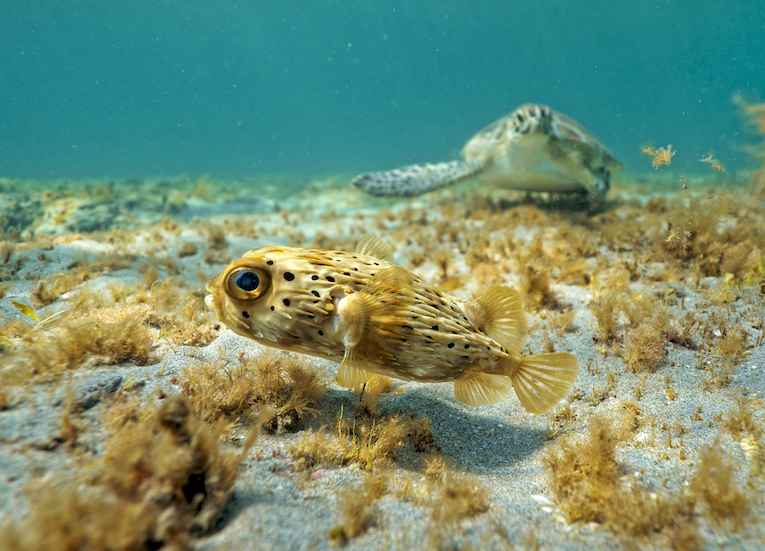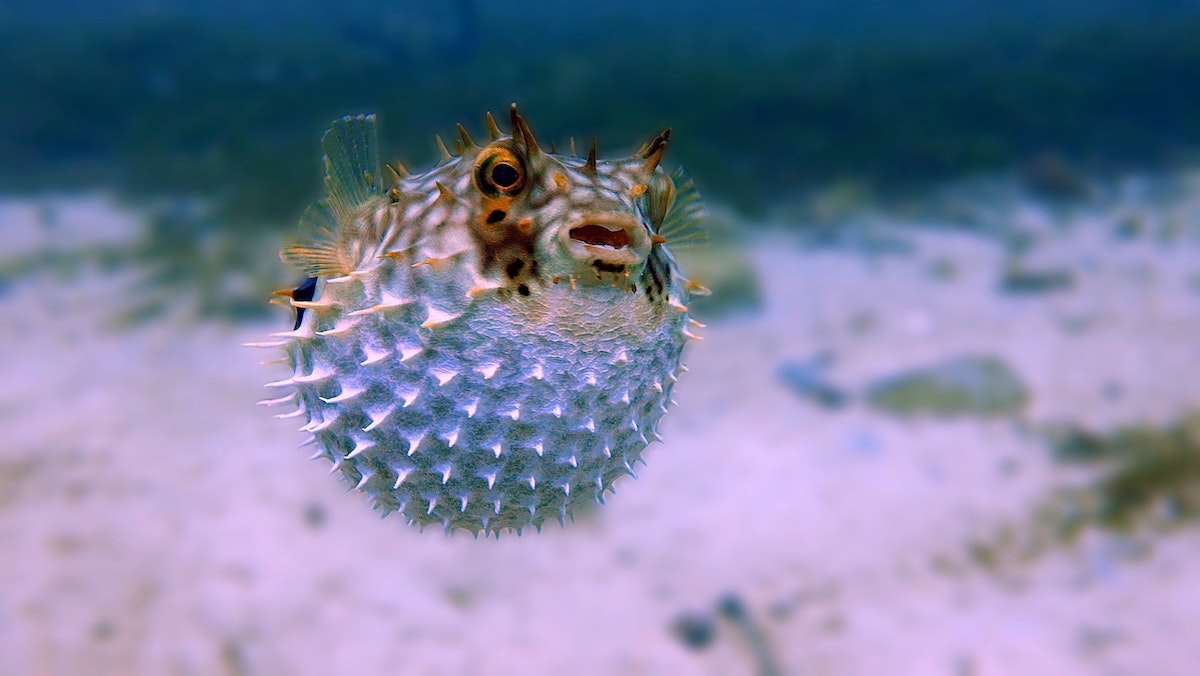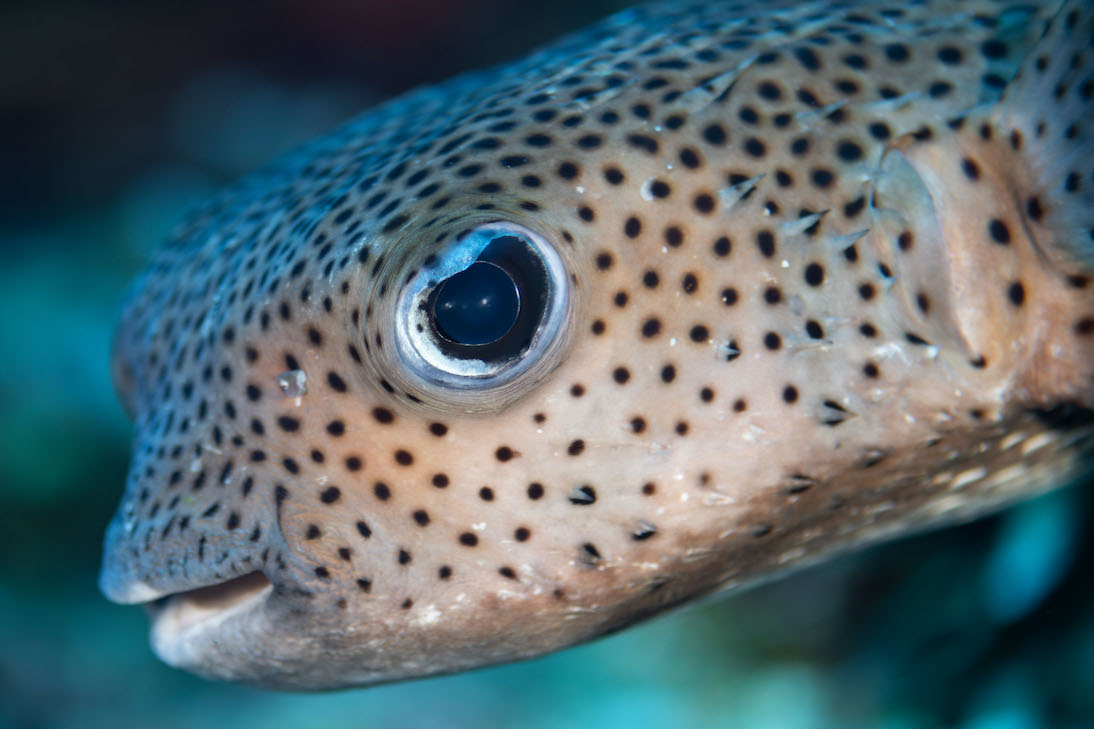Fun Facts About Pufferfish
Meet one of the deadliest fish in the sea.

Pufferfish , also known as blowfish or balloonfish, are likely among the most recognizable fish in the sea. The pufferfish’s iconic ability to “puff up” in defense against predators is a widely known fact, but did you know there is more to this unique fish?
How much do you really know about these curious creatures? Let’s dive in and find out!
Pufferfish are primarily found in tropical and subtropical waters (with a few being found in freshwater and even brackish environments). There are more than 120 species of pufferfish worldwide. Smooth pufferfishes (family Tetraodontidae) have short, rounder bodies with skin covered in stubby, prickly bumps. Porcupinefishes (family Diodontidae), which are often grouped in with their pufferfish cousins, have larger, pointy spines all over, which lay flush against the body unless the fish is engaged in defensive inflation. The smallest known puffer species is the dwarf or pygmy puffer (Carinotetraodon travancoricus), which measures just about one inch in length, and the largest known species is the freshwater giant puffer (Tetraodon mbu). It’s known to reach more than two feet long!

The normal appearance of a pufferfish is long and tapered, like a football, and they have notably rounded heads. All pufferfish have a beak-like cluster of four fused teeth at the forefront of their mouths which they use to crack open some of their favorite foods. Their prey include shellfish such as crabs, mussels, clams and other shellfish; they are also known to have a taste for sea urchins, sea stars and some algae. Did you know that pufferfish are the only known bony fish that can close their eyes? According to a 2021 publication in New Scientist, they do this by “sink[ing] their eyeballs deep into their sockets and then pucker the skin surrounding the eye together, like a camera’s aperture closing.”
When it comes to swimming, pufferfish are quite agile. They have rounded tails that they steer with, occasionally making quick dashing movements. However, while relatively maneuverable, pufferfish are quite slow swimmers. It’s because of their lack of speed that scientists believe they developed their famed inflation ability. Since pufferfish have a more difficult time escaping from predators than other fish do, they instead swallow water (and sometimes air) and inflate to take on a spherical shape, making them incredibly difficult to consume.

But their ability to “balloon” isn’t the pufferfish’s only defense mechanism. Almost all pufferfish also contain an alarmingly toxic substance called tetrodotoxin, which is both nasty-tasting and deadly to most other fish. The toxin is thought to be synthesized from the bacteria contained in the pufferfish’s diet. Tetrodotoxin is about 1,200 times more poisonous than cyanide, with one pufferfish holding enough poison to be lethal to 30 humans. To date, there is no antidote. Some shark species are the only known predators to be able to safely digest pufferfish (if they feel like trying to consume them in ball-form). When it comes to advertising their toxicity, some pufferfish have vibrant coloration to warn of their deadly components, though others have a more modest appearance with the goal of blending in with their surroundings.
One particularly mysterious behavior exhibited by pufferfish has perplexed scientists for years. These fish are known to dig complex shapes and patterns into the seafloor, a product of male puffers’ mating ritual performance, where their wheel-shaped, elaborately-patterned nests in the sand provide a strategy for attracting contending females.

All of this is to say that pufferfish truly are some of the most oddly remarkable and uniquely designed fish species in the sea. While most populations of these fish are considered stable, some species are considered vulnerable due to threats like habitat loss, overfishing and pollution. Pufferfish and so many other marine life species need us to protect their homes now more than ever. Be sure to visit Ocean Conservancy’s Action Center today for the latest ways you can help protect creatures like pufferfish and our ocean!